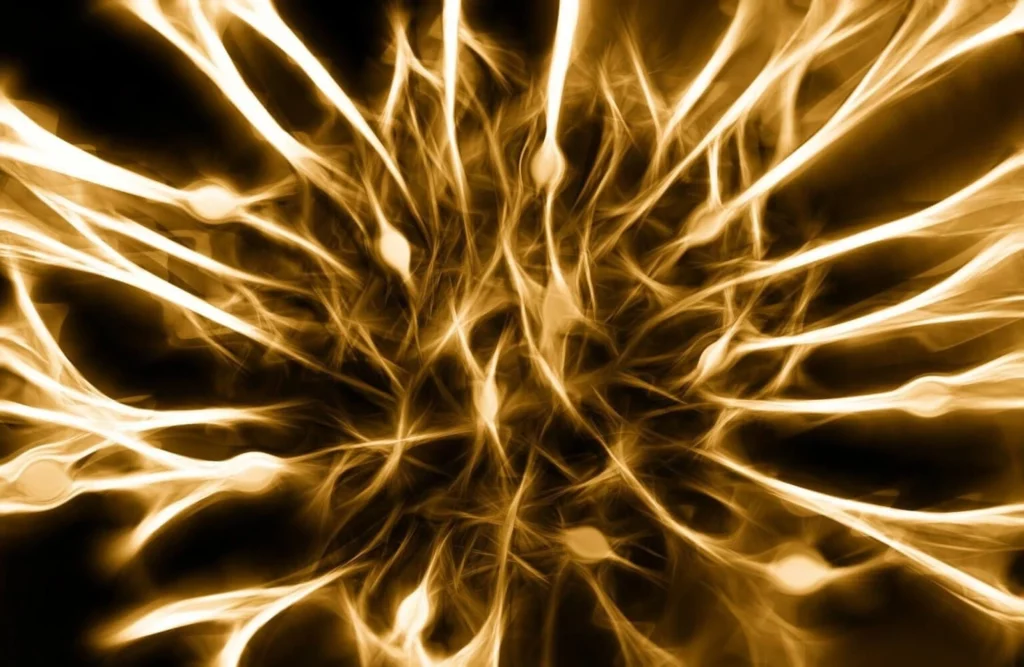Microfluidic systems for the study of neurotransmitters: NeuroTrans
Author
Christa Ivanova, PhD
Publication Date
June 04, 2021
Status
Keywords
neurotransmitters
neuronal transporters
Novel Psychoactive Substances
Parkinson
Epilepsy
optical monitoring
pharmacodynamics
drug testing
Your microfluidic SME partner for Horizon Europe
We take care of microfluidic engineering, work on valorization and optimize the proposal with you
Microfluidic systems for the study of neurotransmitters: introduction

Neurons interact and propagate signals by releasing small molecules called neurotransmitters, into the synaptic cleft (Fig. 1); the reuptake of these molecules is very fast (milliseconds) and is carried out by membrane proteins called neurotransporters.
Understanding how these membrane proteins interact with neurotransmitters and recreational drugs or new psychoactive substances (NPS), is a highly interesting and challenging task for scientists and biologists.
They are also interested in elucidating how their malfunction can be linked to diseases like Parkinson, epilepsy or seizures.
Studying neurotransmitters with microfluidics: project description
In the ITN consortium NeuroTrans, the Microfluidics Innovation Center will bring its expertise to develop a user-friendly microfluidic platform for cell culture on a chip that will allow multiple substrates to be tested simultaneously and offer real-time optical monitoring of cells in biocompatible conditions to elucidate neurotransmitter function.
Using the OB1 flow controller and the MUX injection valve (Elveflow), the perfusion system will provide temperature control, precise compound delivery, cell perfusion, and optical monitoring of cell growth.
Between 50 and 200 Novel Psychoactive Substances (NPS) appear each year on the illicit drug market. These substances compete with neurotransmitters to bind transporters, causing nonphysiological effects.
NPS is untested, neither for pharmacodynamic activity nor toxicological side-effects, creating a massive burden for society. Thorough and rapid characterization of NPS is, therefore, a top priority, both for healthcare professionals and policymakers.
We aim to develop a user-friendly microfluidic platform to characterize the mode of action of new psychoactive substances mimicking neurotransmitters.
This project will be undertaken in close collaboration with the Medical University of Vienna, in the group of Prof. Dr. Harald Sitte, Department of Pharmacology.

Related content & results from this project
In the light of the NeuroTrans project, we have developed:
In addition, we published a review about deep learning and microfluidics and an application note on automated sample collection.
Funding
This project has received funding from the European Union’s Horizon research and innovation program under the Marie Skłodowska-Curie grant agreement No 860954 (NeuroTrans project).
Researcher

Francesca Romana Brugnoli
Marie-Curie PhD Candidate Elvesys/MUW
- M.Sc. Politecnico di Milano (Milan, Italy)
- B.Sc. Sapienza University (Rome, Italy)
Areas of expertise:
Biomedical engineering, Microfluidics



Check our Projects
FAQ – Microfluidics for the study of neurotransmitters: NeuroTrans
What is NeuroTrans within a sentence?
A successful Marie Sklodowska-Curie project that fabricated a user-friendly microfluidic system to investigate the interactions between neurotransmitters and drug mimics and neurological transporters in cellular environments under highly controlled conditions biologically compatible with living carrier systems.
What is the purpose of microfluidics to research the neurotransmitters and transporters?
Since synaptic chemistries develop in rapid time and in the scale of micromolar/nanomolar concentrations. Microfluidics allows you to provide sharp pulses, gradients, and sequences of compounds delivering nutrients to the cells and observing the transport and reuptake processes in real time, and without the diffusion and mixing demerits of full-scale systems.
What in fact did the platform control?
Flow and composition (perfusion and rapid exchange of compositions), steady state temperature in the chip and real-time optical interrogation of the chip by imaging applications. A system was designed that mixed the pressure-based flow controller (OB1) and the multi-position injection valve (MUX) to program the system and to multiplex the assays using a single-chip system.
What are its biological strengths with regard to the questions asked?
Transporter-mediated uptake and reuptake mechanisms, endogenous neurotransmitter/Novel Psychiatric Substance (NPS) competition and altered transporter functioning may be related to neurological diseases like Parkinson’s disease, epilepsy, or type of seizures.
Does the system deal with NPS screening?
Through exposing the neuronal cells to predetermined series of candidate compounds that recreate the natural neurotransmitters and measuring transporter reactions within fixed flow, temperature and time limitations. The platform is aimed at fast characterization – useful where 50 to 200 new NPS are being introduced to illicit markets each year, and little or no pharmacodynamic or toxicological annotation exists.
Which are the major readouts, i.e., the imaging ones, electrical ones, or the biochemical ones?
It was a platform that was to be used in real-time optical monitoring of cells and transporter activity during the perfusion. This implies that imaging-measures (e.g., fluorescent reporter, morphology and viability with dose) are first-class citizens, biochemical sampling is permissible with automated collection on-demand.
To what extent is parallelization developed?
To achieve the automated switching and segmented perfusion paths, it is possible to have numerous substrates or drug states on the same chip in a single experiment. In practice, it implies directly comparing them with the same temperature and flow history, decreasing inter-experiment variability and enhancing statistical power.
What physical result/ spin off of NeuroTrans occurred?
A number of reusable building blocks: an inflammatory bowel disease application pack (flow control core to neuro assays), a precision sampling pack to cell culture, a review regarding deep learning in microfluidics, and an application note concerning automated collection of samples. The two constitute a toolbox of reproducible experiments with high content of micro-physiological experiments.
What is the average first experiment on this platform?
On the chip, seed neuronal cells; equilibrate at a fixed temperature, provide physiologic baseline perfusion: directly apply successive pulses applying short and programmable pulses of a neurotransmitter and one or more NPS analogs using MUX. Simultaneous imaging measures uptake/release identification and cellular wellbeing. The analysis of the data involves the comparison of the conditions in parallel to rank potency, kinetics, and transporter specificity.
What types of teams should be most helped using this method?
The researcher requires efficient electrophysiological tools needed by neuroscience collectives to examine the actions of the transporters; pharmacology laboratories to develop ligands of interest; and translationally oriented groups to establish disease-relevant models of the cell which require automated, dependable dosage and uncontaminated optical dose-outcomes. The platform logic of other excitable tissues and families of transporters is similar.
What is this related to disease-model chips (other than neuroscience)?
The identical control stack – stable perfusion, temperature and controlled injections and imaging – were re-applied to other MIC packs (e.g. inflammatory models). The NeuroTrans architecture portfolios often well and only need channel geometry and surface-chemistry adjustments with the bio-time requirement of node activation being critical or that the competitiveness of compounds is time-critical.